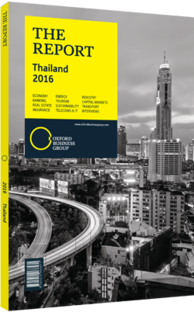Supaluck Umpujh, Vice-Chairwoman, The Mall Group: Interview

Interview: Supaluck Umpujh
How have domestic and global economic conditions impacted the Thai retail sector, and what impact has the recovering tourism industry had?
SUPALUCK UMPUJH: It is important to look at previous patterns when predicting how global economic trends and tourism growth will affect the retail sector. For instance, in 1997 when the Thai baht devalued sharply, several large retail outlets launched. Most people thought they would fail due to the difficult domestic conditions. However, in the span of two years the Thailand tourism sector grew significantly, partly due to depreciation of the baht.
The situation is much the same today, in that although domestic consumption has been impacted by slower economic growth – coupled with a growing trend for wealthy Thais to shop in other destinations, such as Japan, due to visa regulation changes and lower rates of luxury goods taxation – tourism has been driving the retail industry. In 2015 tourist arrivals increased to 30m, up from 26m the previous year, despite unfavourable global economic trends, including the devaluation of currencies such as the euro and Russian ruble, two key markets.
Thailand remains the top Asian destination for tourism, with unbeatable service and hospitality segments. The retail sector should better position itself to take advantage of this fact to make Thailand a shopping hub. The key is to make the country price competitive with others in the region, and the current high duty on imported luxury goods is one of the final hurdles we must overcome to achieve that. Representatives from the retail sector have been speaking to the government for some time regarding this, as if the duty was reduced from 30% to 10%, we could easily attain around BT200bn ($6bn) in extra revenue and raise tourist arrivals to 40m-50m annually.
This is especially important when looking at the growing tourist market from China and ASEAN. These are emerging economies that are fast developing a taste for luxury and brand-name goods, so catering to those markets would be of huge benefit. I believe that Thailand can look to global models like Dubai to develop tax and business regimes conducive to making the country a shopping hub and subsequently increase tourism revenue.
What retail growth rates are Thailand’s secondary cities and regions experiencing, and how do community malls affect market penetration?
UMPUJH: While Bangkok contains the vast majority of Thailand’s population and is the traditional entry point to the nation for foreign visitors, there exists potential in other cities. Nakhon Ratchasima in the north-east is an example of this. The city, while sparsely populated, serves as a gateway to the north-eastern provinces. The high-speed train in development will improve its connectivity with Bangkok, resulting in more tourism, while local incomes have already been growing in the region. Hua Hin is another city with potential, as it has become a legacy destination. As the Thai population ages and life expectancy rises, these areas are gaining popularity as second homes and even as a retirement destinations for locals and foreigners alike. To that end, we have re-launched The Mall Korat and are developing the BluPort Hua Hin to tap these markets. Retail competition is also low in these locations at the moment.
It is true that community and neighbourhood malls tend to dominate in cities other than Bangkok, but these are largely complementary to large-scale retail developments. Community malls tend to focus on the food and beverage segment, offering residents a place to go and spend time rather than money. Furthermore, community malls don’t often have the anchor tenants and tenant mix to compete with retail centres. Thailand epitomises Asian mall culture; providing destinations with shopping, food and entertainment can always be successful if done correctly.
You have reached the limit of premium articles you can view for free.
Choose from the options below to purchase print or digital editions of our Reports. You can also purchase a website subscription giving you unlimited access to all of our Reports online for 12 months.
If you have already purchased this Report or have a website subscription, please login to continue.

